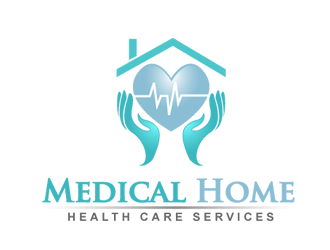
In this article, we discuss the potential for miscarriage after amniocentesis. We will also cover the accuracy and signs and symptoms of a negative and positive result. This article will help you determine whether an amniocentesis testing is right for your pregnancy. Before you decide whether to have the test, consider these things:
Risks of miscarriage after amniocentesis
The chances of miscarriage from amniocentesis being performed are extremely low. The procedure is very unlikely to cause miscarriage in about one out of 100 women. The majority of women who are offered this test decline to take it. The chances of miscarriage can occur at any stage of a woman's pregnancy. There is also a small chance that amniotic fluid will leak during the procedure.

Accuracy in amniocentesis tests
An amniocentesis is a test that examines the fetus to determine sex and lung development. The test is accurate and can lead to complications, especially for mother who is pregnant with multiple children. Women should discuss any possible complications with their healthcare provider. Here are some possible complications. If you have any vaginal bleeding after the procedure, you should consult your healthcare provider, even if it's mild.
Signs of a positive test result
You might be curious to know how to proceed if you have positive results. The test will be completed by your doctor. You will remain in the testing area for about an hour. Your health care provider will monitor your heart rate, vital signs, and fetal health. Your healthcare provider should be notified immediately if there are any dizziness, nausea, or other symptoms during the procedure. The test results may take up to a few weeks. These results will assist you in making decisions about your treatment.
Negative results of tests
Certain birth defects can be diagnosed early in pregnancy with genetic amniocentesis. These tests can detect Down Syndrome, Cystic Fibrosis and other blood types. You may also find out if your baby is affected by Down syndrome. But, a negative test result for genetic amniocentesis does not necessarily mean that your pregnancy is over. You can still undergo further testing during pregnancy.

After amniocentesis, what are the treatment options?
If you just found out that you're pregnant you might want to know your options. Though the test has 99.4% accuracy, it is not without risks. There are technical issues that could cause the procedure to fail. For example, it may not be possible to obtain enough amniotic tissue or culture cells. There are also risks of miscarriage, infection and injury to the baby or mother.
FAQ
What can we do to improve the health care system?
Our health care system can be improved by ensuring everyone gets high-quality care regardless of where they live and what type of insurance they have.
It is important that we ensure that all children get the necessary vaccines to prevent them from getting diseases such as rubella, measles, and mumps (MMR).
We must continue our efforts to lower the cost and make sure it remains available for everyone.
What can I do to ensure my family receives quality health care services?
Your state will probably have a department of health that helps ensure everyone has access to affordable health care. There are programs that cover low-income families and their children in some states. To find out more about these programs, contact your state's Department of Health.
What's the difference between a doctor, and a physician?
A doctor is an individual who has completed his/her training and is licensed to practice medicine. A physician is a medical professional who specializes in one field of medicine.
What is a health care system in public health?
The term Health System describes all activities related to providing medical services for a particular population. It includes all aspects of service delivery, finance, regulation and education.
Statistics
- Over the first twenty-five years of this transformation, government contributions to healthcare expenditures have dropped from 36% to 15%, with the burden of managing this decrease falling largely on patients. (en.wikipedia.org)
- Healthcare Occupations PRINTER-FRIENDLY Employment in healthcare occupations is projected to grow 16 percent from 2020 to 2030, much faster than the average for all occupations, adding about 2.6 million new jobs. (bls.gov)
- The health share of the Gross domestic product (GDP) is expected to continue its upward trend, reaching 19.9 percent of GDP by 2025. (en.wikipedia.org)
- About 14 percent of Americans have chronic kidney disease. (rasmussen.edu)
- The healthcare sector is one of the largest and most complex in the U.S. economy, accounting for 18% of gross domestic product (GDP) in 2020.1 (investopedia.com)
External Links
How To
What are the 4 Health Systems
The healthcare system includes hospitals, clinics. Insurance providers. Government agencies. Public health officials.
The goal of this infographic was to provide information to people interested in understanding the US health care system.
Here are some key points:
-
The GDP accounts for 17% of healthcare spending, which amounts to $2 trillion annually. It's nearly twice the size as the entire defense budget.
-
Medical inflation was 6.6% in 2015, higher than any other category of consumer.
-
On average, Americans spend 9% of their income on health costs.
-
There were more than 300 million Americans without insurance as of 2014.
-
Although the Affordable Health Care Act (ACA), has been approved by Congress, it hasn't yet been fully implemented. There are still major gaps in coverage.
-
The majority of Americans think that the ACA needs to be improved.
-
The US spends the most money on healthcare in the world than any other country.
-
If every American had access to affordable healthcare, the total cost would decrease by $2.8 trillion annually.
-
Medicare, Medicaid, private insurers and other insurance policies cover 56%.
-
People don't have insurance for three reasons: they can't afford it ($25 Billion), don’t have enough time to search for it ($16.4 Billion), and don’t know about it ($14.7Billion).
-
There are two types of plans: HMO (health maintenance organization) and PPO (preferred provider organization).
-
Private insurance covers almost all services, including prescriptions and physical therapy.
-
Public programs cover hospitalization, outpatient surgery, nursing homes, hospice care, long-term care, and preventive care.
-
Medicare, a federal program, provides seniors with health insurance. It covers hospital stays, skilled nursing facility stays and home visits.
-
Medicaid is a joint federal-state program that provides financial assistance for low-income individuals or families who earn too little to qualify for other benefits.